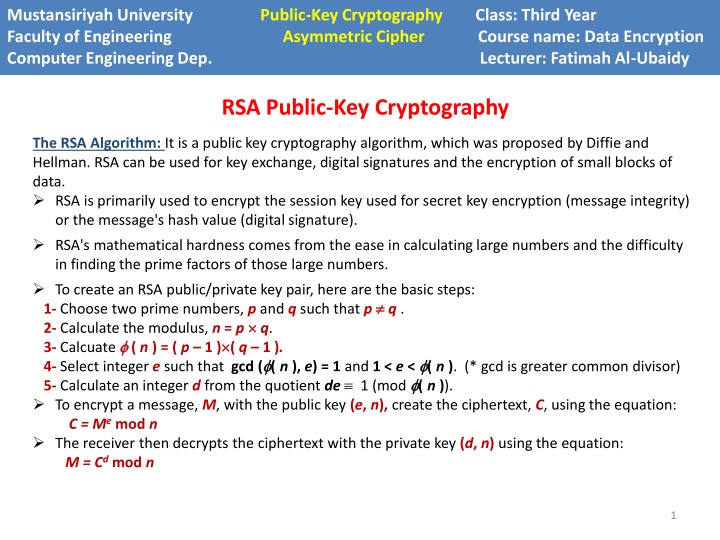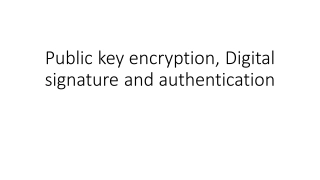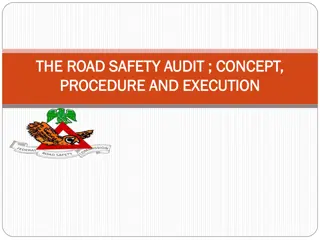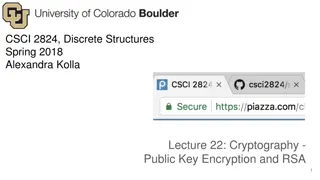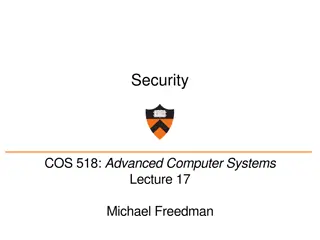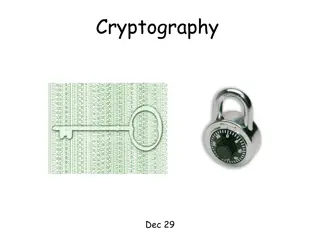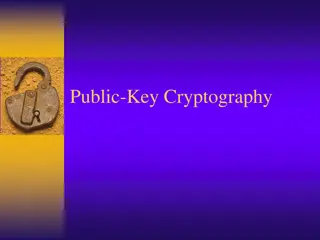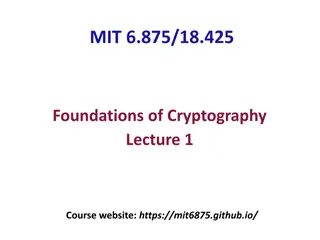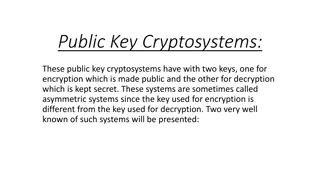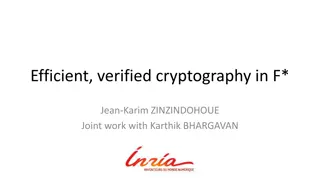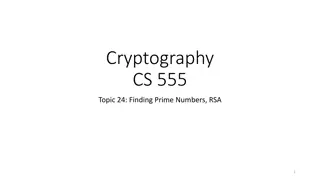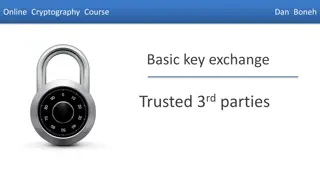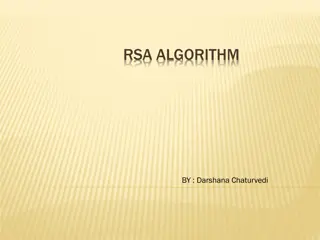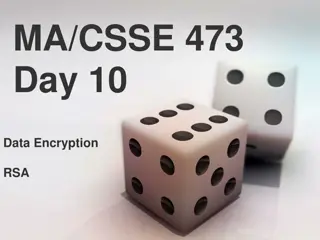RSA Algorithm in Public-Key Cryptography
The RSA algorithm is a crucial public key cryptography method used for key exchange, digital signatures, and data encryption. It involves generating public-private key pairs using prime numbers, encryption with the public key, and decryption with the private key. The algorithm's strength lies in the difficulty of factorizing large numbers, making it secure for various cryptographic operations.
Download Presentation

Please find below an Image/Link to download the presentation.
The content on the website is provided AS IS for your information and personal use only. It may not be sold, licensed, or shared on other websites without obtaining consent from the author.If you encounter any issues during the download, it is possible that the publisher has removed the file from their server.
You are allowed to download the files provided on this website for personal or commercial use, subject to the condition that they are used lawfully. All files are the property of their respective owners.
The content on the website is provided AS IS for your information and personal use only. It may not be sold, licensed, or shared on other websites without obtaining consent from the author.
E N D
Presentation Transcript
Mustansiriyah University Faculty of Engineering Asymmetric Cipher Course name: Data Encryption Computer Engineering Dep. Lecturer: Fatimah Al-Ubaidy Public-Key Cryptography Class: Third Year RSA Public-Key Cryptography The RSA Algorithm: It is a public key cryptography algorithm, which was proposed by Diffie and Hellman. RSA can be used for key exchange, digital signatures and the encryption of small blocks of data. RSA is primarily used to encrypt the session key used for secret key encryption (message integrity) or the message's hash value (digital signature). RSA's mathematical hardness comes from the ease in calculating large numbers and the difficulty in finding the prime factors of those large numbers. To create an RSA public/private key pair, here are the basic steps: 1- Choose two prime numbers, p and q such that p q. 2- Calculate the modulus, n=p q. 3- Calcuate ( n ) = ( p 1 ) ( q 1 ). 4- Select integer e such that gcd ( ( n ), e) = 1 and 1 < e < ( n ). (* gcd is greater common divisor) 5- Calculate an integer d from the quotient de 1 (mod ( n )). To encrypt a message, M, with the public key (e, n), create the ciphertext, C, using the equation: C = Memod n The receiver then decrypts the ciphertext with the private key (d, n) using the equation: M = Cdmod n 1
Mustansiriyah University Faculty of Engineering Asymmetric Cipher Course name: Data Encryption Computer Engineering Dep. Lecturer: Fatimah Al-Ubaidy Public-Key Cryptography Class: Third Year RSA Public-Key Cryptography The RSA Example 1. Select two prime numbers, p = 17 and q = 11. 2. Calculate n = p q = 17 11 = 187. 3. Calculate (n) = (p - 1)(q - 1) = 16 10 = 160. 4. Select esuch that eis relatively prime to (n) = 160 and less than (n); we choose e= 7. 5. Determine dsuch that de 1 (mod 160) and d< 160.The correct value is d = 23, because 23 7 = 161 = (1 160) + 1. The resulting keys are public key PU= {7, 187} and private key PR= {23, 187}. Given a plaintext input of M= 88. For encryption, we need to calculate C= 887 mod 187. we can do this as follows. 887mod 187 = [(884mod 187) * (882mod 187) * (881mod 187)] mod 187 881 mod 187 = 88 882mod 187 = 7744 mod 187 = 77 884mod 187 = 59,969,536 mod 187 = 132 887mod 187 = (88 * 77 * 132) mod 187 = 894,432 mod 187 = 11 2
Mustansiriyah University Faculty of Engineering Asymmetric Cipher Course name: Data Encryption Computer Engineering Dep. Lecturer: Fatimah Al-Ubaidy Public-Key Cryptography Class: Third Year RSA Public-Key Cryptography For decryption, we calculate M= 1123 mod 187: 1123mod 187 = [(111mod 187) * (112 mod 187) * (114mod 187) * (118mod 187) * (118mod 187)] mod 187 111 mod 187 = 11 112 mod 187 = 121 114mod 187 = 14,641 mod 187 = 55 118mod 187 = 214,358,881 mod 187 = 33 1123mod 187 = (11 * 121 * 55 * 33 * 33) mod 187 = 79,720,245 mod 187 = 88 In the preceding example shows, we can make use of a property of modular arithmetic: [(amod n) * (bmod n)] mod n= (a* b) mod n As another example, suppose we wish to calculate x11 mod nfor some integers x and n. Observe that x11 = x1+2+8 = (x)(x2)(x8). 3
Mustansiriyah University Faculty of Engineering (Asymmetric Cipher) Course name: Data Encryption Computer Engineering Dep. Lecturer: Fatimah Al-Ubaidy Public-Key Cryptography Class: Third Year Public-Key Cryptography Applications for Public-Key Cryptosystems: Encryption/decryption: The sender encrypts a message with the recipient s public key, and the recipient decrypts the message with the recipient s private key. Digital signature: The sender signs a message with its private key. Key exchange: Two sides cooperate to exchange a session key. The security of RSA: Five possible approaches to attacking the RSA algorithm are Brute force: This involves trying all possible private keys. Mathematical attacks: There are several approaches, all equivalent in effort to factoring the product of two primes. Timing attacks: These depend on the running time of the decryption algorithm. Hardware fault-based attack: This involves inducing hardware faults in the processor that is generating digital signatures. Chosen ciphertext attacks: This type of attack exploits properties of the RSA algorithm. 4
Mustansiriyah University Faculty of Engineering Asymmetric Cipher Course name: Data Encryption Computer Engineering Dep. Lecturer: Fatimah Al-Ubaidy Public-Key Cryptography Class: Third Year RSA processing of multiple blocks 5
